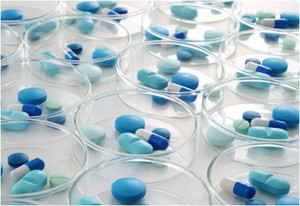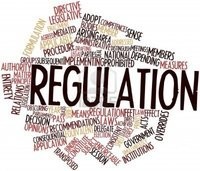On 12 December 2014, the US Food and Drug Administration (FDA) released 31 new draft guidance documents and 22 revisions to guidance documents on bioequivalence requirements for the development of generics containing 42 different active ingredients.
The new draft bioequivalence guidance documents cover generics of acne treatment Aczone (dapsone), antipsychotic medication Latuda, (lurasidone), chemotherapy drug Stivarga (regorafenib), HIV medicine Stribild (cobicistat/elvitegravir/emtricitabine/tenofovir), head lice treatment Ulesfia (benzyl alcohol) and arthritis treatment Xeljanz (tofacitinib), among others, see Table 1.
Revised bioequivalence guidance documents include those for generics of high blood pressure treatment Bystolic (nebivolol), chemotherapy drug Doxil (doxorubicin), acne treatment Epiduo (adapalene/benzoyl peroxide) and Alzheimer’s drug Namenda (memantine), to name just a few, see Table 2.
Table 1: FDA new draft bioequivalence guidance documents
| Active ingredient
|
Route of administration
|
Dosage form
|
Link
|
| Acetaminophen/aspirin/caffeine
|
Oral
|
Tablet
|
Click here
|
| Acetaminophen/butalbital/caffeine/codeine phosphate
|
Oral
|
Capsule
|
Click here
|
| Acyclovir
|
Topical
|
Cream, 5%
|
Click here
|
| Aripiprazole
|
Intramuscular
|
Injectable Suspension, Extended Release
|
Click here
|
| Benzyl alcohol
|
Topical
|
Lotion
|
Click here
|
| Betamethasone valerate
|
Topical
|
Foam, Aerosol
|
Click here
|
| Bosutinib monohydrate
|
Oral
|
Tablet
|
Click here
|
| Brimonidine tartrate/brinzolamide
|
Ophthalmic
|
Drops, Suspension
|
Click here
|
| Budesonide
|
Oral
|
Tablet, Extended Release
|
Click here
|
| Buprenorphine HCl/naloxone HCl
|
Oral
|
Tablet, Sublingual
|
Click here
|
| Cobicistat/elvitegravir/emtricitabine/tenofovir disoproxil fumarate
|
Oral
|
Tablet
|
Click here
|
| Conjugated estrogens
|
Oral
|
Tablet
|
Click here
|
| Dapsone
|
Topical
|
Gel, 5%
|
Click here
|
| Darunavir ethanolate
|
Oral
|
Suspension
|
Click here
|
| Ibuprofen sodium
|
Oral
|
Tablet
|
Click here
|
| Levothyroxine sodium
|
Oral
|
Tablet
|
Click here
|
| Lidocaine/prilocaine
|
Topical
|
Cream
|
Click here
|
| Lomitapide mesylate
|
Oral
|
Capsule
|
Click here
|
| Lurasidone HCl
|
Oral
|
Tablet
|
Click here
|
| Methylphenidate HCl
|
Oral
|
Suspension,Extended Release
|
Click here
|
| Metoprolol tartrate
|
Oral
|
Tablet
|
Click here
|
| Nepafenac
|
Ophthalmic
|
Drops, Suspension 0.1%
|
Click here
|
| Nepafenac
|
Ophthalmic
|
Drops, Suspension 0.3%
|
Click here
|
| Posaconazole
|
Oral
|
Tablet, Delayed Release
|
Click here
|
| Raltegravir potassium
|
Oral
|
Tablet, Chewable
|
Click here
|
| Regorafenib
|
Oral
|
Tablet
|
Click here
|
| Selegiline hydrochloride
|
Oral
|
Capsule
|
Click here
|
| Testosterone
|
Transdermal
|
Film, Extended Release
|
Click here
|
| Tofacitinib citrate
|
Oral
|
Tablet
|
Click here
|
| Treprostinil diolamine
|
Oral
|
Tablet, Extended Release
|
Click here
|
| Vandetanib
|
Oral
|
Tablet
|
Click here
|
Table 2: FDA revised draft bioequivalence guidance documents
| Active ingredient
|
Route of administration
|
Dosage form
|
Link
|
| Adapalene
|
Topical
|
Lotion
|
Click here
|
| Adapalene
|
Topical
|
Cream
|
Click here
|
| Adapalene
|
Topical
|
Gel
|
Click here
|
| Adapalene
|
Topical
|
Gel
|
Click here
|
| Adapalene/benzoyl peroxide
|
Topical
|
Gel
|
Click here
|
| Brimonidine tartrate
|
Ophthalmic
|
Solution/Drops 0.1%
|
Click here
|
| Brimonidine tartrate
|
Ophthalmic
|
Solution/Drops 0.2%
|
Click here
|
| Brimonidine tartrate
|
Ophthalmic
|
Solution/Drops 0.15%
|
Click here
|
| Brinzolamide
|
Ophthalmic
|
Suspension/Drops 1%
|
Click here
|
| Doxorubicin HCl
|
Injectable
|
Injection, Liposome
|
Click here
|
| Ethinyl estradiol/levonorgestrel
|
Oral
|
Tablet
|
Click here
|
| Hydrocodone bitartrate/ibuprofen
|
Oral
|
Tablet
|
Click here
|
| Ketoconazole
|
Topical
|
Foam, Aerosol 2%
|
Click here
|
| Memantine HCl
|
Oral
|
Tablet
|
Click here
|
| Memantine HCl
|
Oral
|
Capsule, Extended Release
|
Click here
|
| Methylprednisolone acetate
|
Injection
|
Suspension
|
Click here
|
| Nebivolol HCl
|
Oral
|
Tablet
|
Click here
|
| Nisoldipine
|
Oral
|
Tablet, Extended Release
|
Click here
|
| Phenytoin sodium
|
Oral
|
Capsule, Extended Release
|
Click here
|
| Phenytoin sodium
|
Oral
|
Capsule, Extended Release
|
Click here
|
| Sevelamer carbonate
|
Oral
|
Suspension
|
Click here
|
| Sevelamer HCl
|
Oral
|
Tablet
|
Click here
|
The draft guidance documents recommend whatin vivoandin vitrostudies generics companies should carry out in order to demonstrate bioequivalence. The number of studies, the population to be studied, blood sampling time points and analytes to be measured in blood samples are also detailed in the draft guidance documents.
In total, FDA now has 1,236 product-specific guidelines with bioequivalence study recommendations. The agency also has an overarching guidance document on bioequivalence recommendations for specific products [1].
Comments on the draft guidance documents can be posted to the Division of Dockets Management (DDM) under Docket FDA-2007-D-0369-0015. This can be done via the website www.regulations.gov or written comments can be mailed to DDM (HFA-305), FDA, 5630 Fishers Lane, Rm. 1061, Rockville, MD 20852.
Related articles
FDA releases bioequivalence guidance for 26 generics
FDA publishes guidance on ANDAs for new strengths
FDA issues draft guidance for biosimilar meetings
Reference
1. GaBI Online - Generics and Biosimilars Initiative. US guidelines for generics [www.gabionline.net]. Mol, Belgium: Pro Pharma Communications International; [cited 2015 Jan 30]. Available from: www.gabionline.net/Guidelines/US-guidelines-for-generics
Permission granted to reproduce for personal and non-commercial use only. All other reproduction, copy or reprinting of all or part of any ‘Content’ found on this website is strictly prohibited without the prior consent of the publisher. Contact the publisher to obtain permission before redistributing.
Copyright – Unless otherwise stated all contents of this website are © 2015 Pro PharmaCommunications International. All Rights Reserved.








 0
0










Post your comment